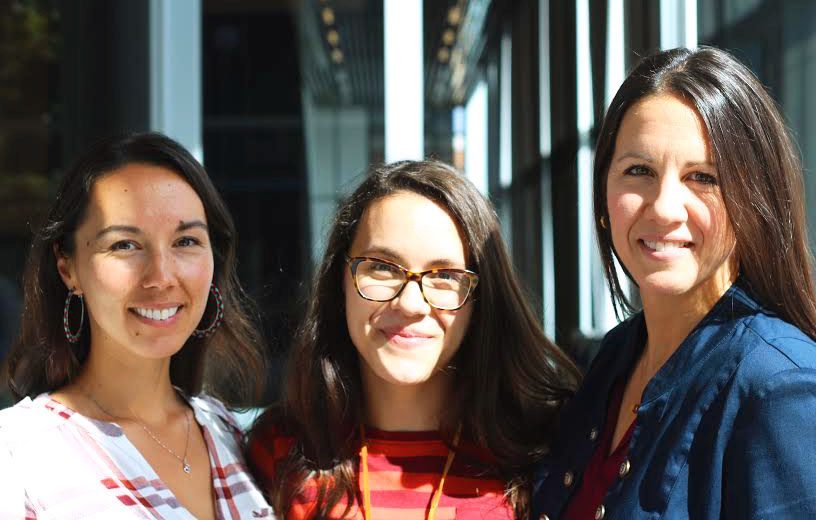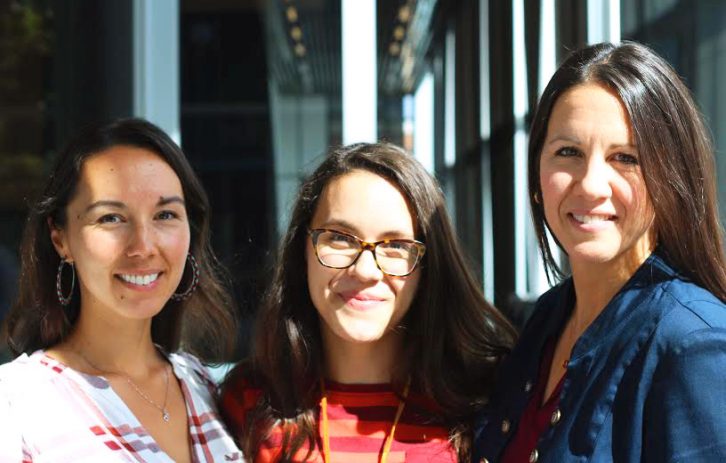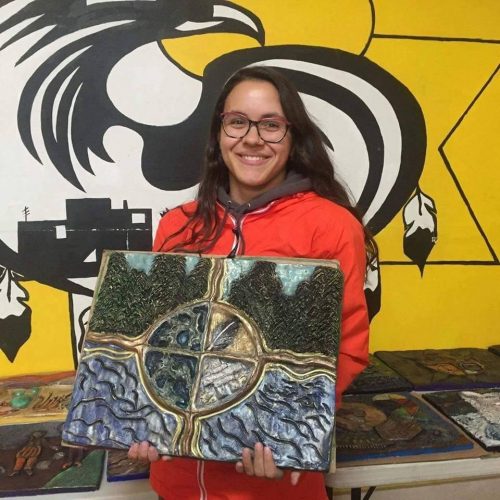Mi'kmaq Culture
Community art project gives urban Indigenous people platform to share experiences
‘It’s time for Indigenous people to tell our own stories’

caption

caption
Sabrina Di Mattia, centre, with her high school aboriginal support worker Diane Obed, left, and her mother, Denise Pothier. Both women are featured in Di Mattia’s clay tile as part of the This Is What I Wish You Knew community art project.When a person is young, it’s easy to feel overlooked. Factor in being Indigenous and living in a city, and they may feel completely invisible.
Sabrina Di Mattia knows this struggle all too well.
The 18-year-old Mi’kmaq woman thinks non-Indigenous people have a stereotypical image of Indigenous people, and may not be aware how many live in urban areas.
Addressing “the invisibility issue that urban Indigenous people face and bringing attention to the Truth and Reconciliation recommendations was a huge part of our project,” says Di Mattia.
The This Is What I Wish You Knew community project brought together 50 aboriginal artists, young people, adults and elders in K’jipuktuk (the Mi’kmaq name for Halifax) and spanned six months.
Di Mattia, who participated in the community legacy project, studies Canadian Studies at Mount Saint Vincent University.
She is part of the three out of 10 Indigenous people in Nova Scotia who reside in Halifax and represent three per cent of the city’s total population, according to Statistics Canada.
The project hopes to increase the visibility of Indigenous people in Halifax, create awareness of how colonialism and social injustice have affected them, and promote reconciliation.
Di Mattia says that project’s creative process included weekly talking circles, which she said led to a clearer idea of what each of them wanted to share with the public.
Di Mattia spoke about her experience as a young urban Indigenous person, alongside fellow project participants Dylan Letendre, Diane Obed and Tayla Paul, last week at the Halifax Public Library. Their talk was part of Prof. Val Marie Johnson’s Urban Sociology course.
Kanzi Hegazi, a Saint Mary’s University student originally from Egypt, is in the Urban Sociology class and attended the presentation.
“I thought it was really interesting to see how not being able to connect to the place you live in really does affect you and the place around you,” says Hegazi.
‘Culture saves people’
“You may know you’re native, but not know your culture or history,” says Di Mattia.
“You (can) lose touch with that and you can really fall off the rails, and that’s what happened to me. Getting kids young in the urban setting to learn about their culture creates a (foundation) for them to keep growing and learning.”

caption
Di Mattia wants to address the “invisibility” of urban Indigenous people.Prior to participating in the project, Di Mattia was not connected to as many Indigenous people in the city as she is now. She says there are programs similar to This Is What I Wish You Knew available to other Indigenous young people in the city, but she thinks there’s a problem with outreach.
“It’s like non-Indigenous people almost don’t promote it because they don’t think that we’re here.”
Di Mattia’s mother, Denise Pothier, also took part in the legacy project. Pothier credits her daughter with helping her reconnect with their Mi’kmaq culture.
“It’s not only the elders … I think we need to be looking to the youth, too,” says Pothier.
Documenting what they wish you knew
The project brought together community members and students from the Mi’kmaw Native Friendship Centre, Dalhousie University and NSCAD University.
“Traditionally research has been done to us and on us, but not with us …. We can’t see ourselves as separate from the research,” says Dalhousie University student Dylan Letendre.
“We’re definitely a part of it. My presence in the circle is definitely going to affect that circle and that I’m a part of that circle.”
Through interviews with each participant, the project provided Indigenous researchers with a better understanding of the variety of cultures, identities and needs of Halifax’s Indigenous population, which can be read about in more depth here.
Continuing to share their stories
Letendre says that there’s been an interest in doing the project in other parts of Canada.
“It’s important to have our ears open to the ways that people are trying to tell their stories because … we’re still trying to be heard,” he says.
Di Mattia hopes they have the opportunity to present and create more dialogue beyond Thursday’s public community presentation.
This Is What I Wish You Knew launched in January and debuted the participants’ 50 clay tiles on National Aboriginal Day, June 21, at the Mi’kmaw Native Friendship Centre on Gottingen Street. You can view the interactive clay tile mural and the participants’ interviews on the project’s website.

